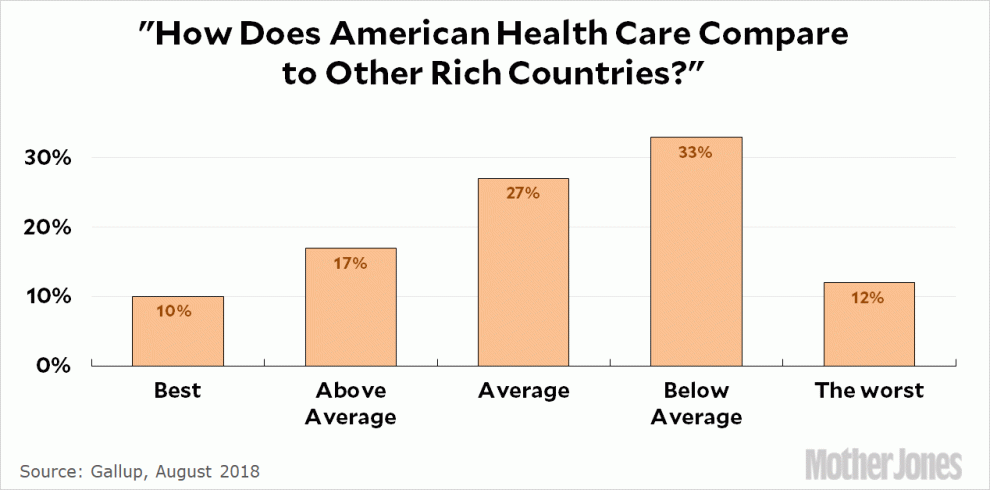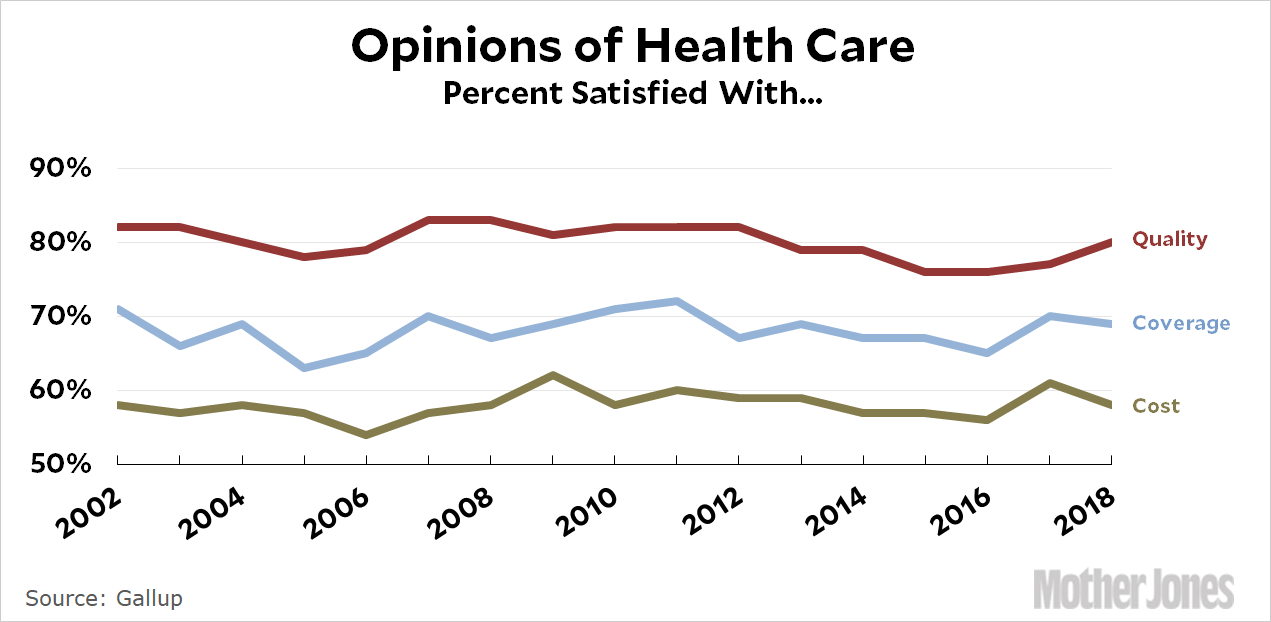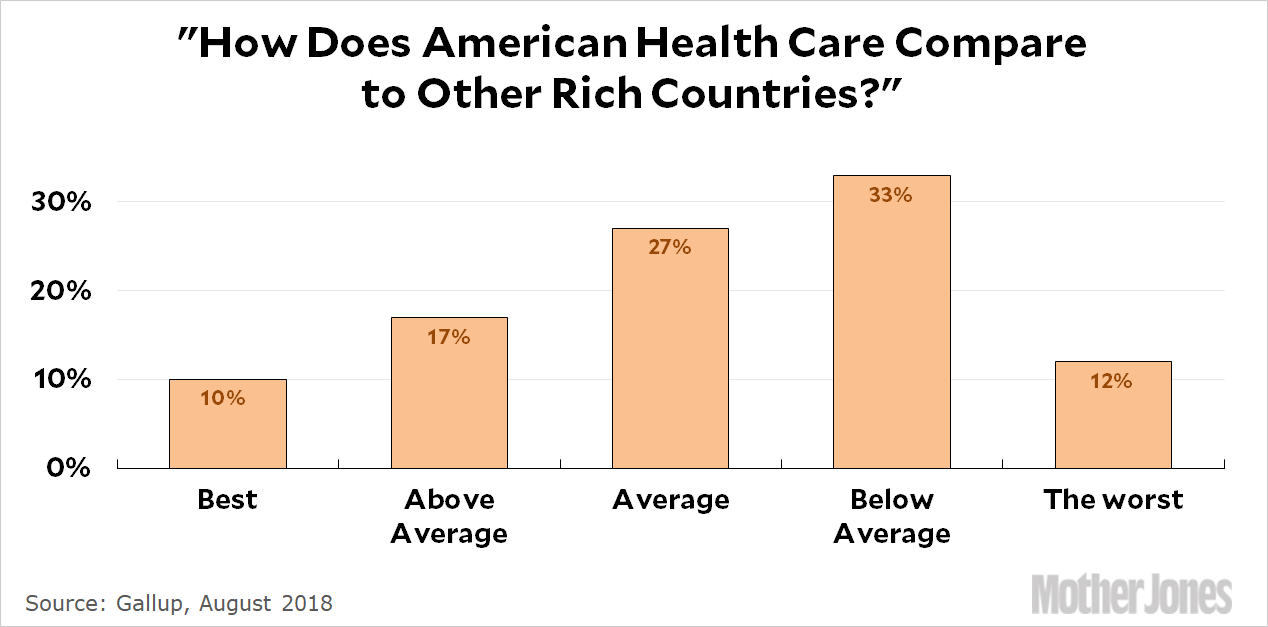
A couple of days ago I suggested that Democrats needed to conduct a scorched-earth campaign against insurance companies if they wanted to persuade the public to support some kind of national health care plan. But that got me thinking. Conventional wisdom says that employer health insurance is the “gold standard,” and that most people who have it don’t want to trade it in for something else. But is that true? Do most people really love their health insurance? Or has that declined as coverage has gotten narrower and copays have gotten higher? Here’s the answer according to Gallup:

To my surprise, nothing much has changed over the past two decades. Despite everything that’s happened over that time, opinions have stayed pretty steady. People love their health plans about as much as they ever did.
However, as I was gathering this data, I read through the Gallup survey questions and found something that surprised me a lot:

Conventional wisdom says that we Americans think our health care is the best in the world. But it turns out that only 27 percent of us even think it’s better than average—while nearly half think it’s worse than average. This sure seems like something we could build on as we’re trying to persuade the country that we can do better than what we have now. Anybody up for Make Health Care Great Again™?















